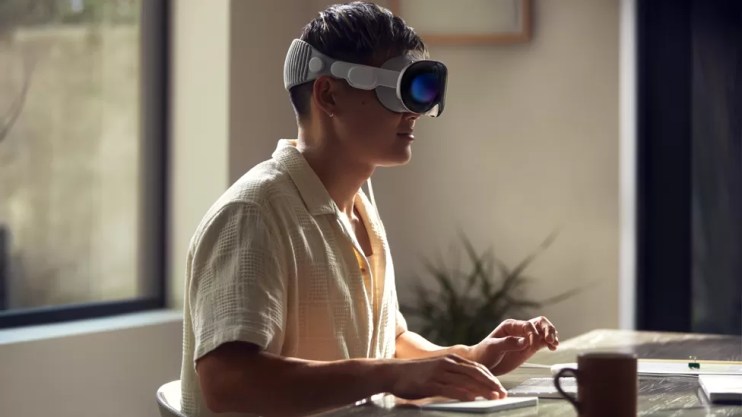Explainer: How does Apple’s new virtual reality headset work?

Yesterday, Apple did something that could revolutionise the way we interact with tech and with our surroundings: it launched Apple Vision Pro, its $3,499 virtual reality headset. Apple CEO Tim Cook described it as “the first Apple product you look through, not at”.
The idea might feel a little daunting at first – but once one understands what the headset actually does, its definition as “spatial computing” becomes clearer. The headset reproduces either an augmented reality version of what we see or a fully immersive virtual reality.
In the first one, you might be in your living room having a “live” conference call with a colleague. They’re not physically with you, but you can see a 3D rendition of their appearance – their “persona” – right in front of you.
In the second one, you might be at your favourite artist’s concert – but from your bedroom.
Mostly, the headset – which looks like a futuristic version of your ski goggles – will act as a board where you can use apps, scroll through pictures and sign documents just by flicking your hands through the space in front of you.
The technology has been praised by the analysts and experts who have tried it, with the only caveat that it has a two-hour battery life. Some of its features are mesmerising: take EyeSight, which displays the eyes of the person wearing the headset to the outside world in a completely realistic way. You think you’re looking someone in the eye, but you’re actually looking at a perfect reconstruction of them on a screen. The screen blurs when the person wearing it is in the virtual reality option.
Apple has made a brave bet here: the product could prove a commercial flop, at least initially, given its price is so high.
It’s also not clear who the audience truly is. You’d think it’s gamers, who provide the biggest market for virtual reality, but many of them won’t be able to afford the headset at such a price. The focus on conference calls and meetings could signal Apple is trying to lure in the corporate world, but companies so far don’t seem to be particularly impressed.
Apple probably wanted to launch early to stifle competition – especially from Meta, which has been investing heavily in its “metaverse” project.
Apple could be making a long-term bet: the product might be for the very few now, and a bit quirky, but as new technology develops and the giant goggles slim down to a more comfortable version, it might become more mainstream. How mainstream we’re talking will be a very interesting question for the future.